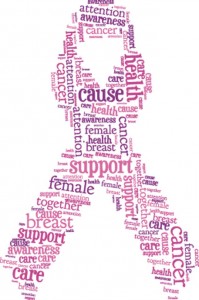The American Cancer Society estimates the number of breast cancer diagnoses in 2014 will be 232,670. Approximately 40,000 women will lose their lives to this disease this year. Breast cancer is the second leading cause of cancer death among women, second only to lung cancer.
Many of us have had a friend or loved one affected by or lost to this disease. That is why we take this month to stop and recognize what we can do to help prevent and treat this condition.

Encouragingly, death rates from breast cancer have been on the decline since the late 1980s. This is mainly due to early detection through increased screening and awareness as well as early treatment. Currently, there are 2.8 million breast cancer survivors in the United States. It is great when we get to be a part of someone saying, “I’m cancer free!”
Risk Factors
Though we cannot control risk factors such as age, gender, ethnicity and family history, others offer us opportunities. These include monthly breast self-exams, regular examinations with a medical provider and imaging like mammograms or ultrasounds. These can lead to early detection and improve survivability.
Knowing other risk factors, such as your age when you give birth (whether or not you use birth control), hormone therapy after menopause, alcohol use, being overweight or the amount of physical activity you engage in, is also important.
Other risks, like tobacco smoke, working night shifts and environmental chemicals, though less understood, may be contributory.
Lowering Your Risk
Though there is no sure-fire way to prevent breast cancer, there is much you can do to lower your risk. The ACS suggests performing regularly planned physical activity, reducing your lifetime weight gain by limiting calories and getting regular activity, avoiding or limiting alcohol intake, breast-feeding your infants and avoiding use of hormone therapy after menopause, if possible.
For women with strong family history, such as mothers and sisters who have had the disease, genetic testing may help further define your risk profile.
Early Detection
The ACS recommends annual mammograms for women over 40. Women in their 20s and 30s should get a clinical breast exam by their health provider at least every three years and yearly after the age of 40. Starting in your 20s, monthly breast self-exams are recommended. Report any changes to your health care provider. Women under 40 who are in the high risk category should get yearly mammograms or MRIs, according to the ACS.
Know the steps you can take to reduce your lifestyle-related risks. Adopt and use early detection methods, report any suspicious changes to your provider and have a basic knowledge of the signs and symptoms of breast cancer. It could save your life.
For more information, call the 86th Medical Group at 479-CARE (2273) to make an appointment with your provider or visit www.cancer.org.







